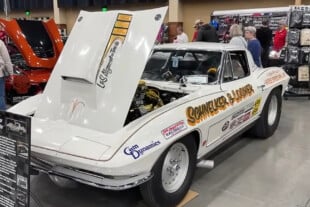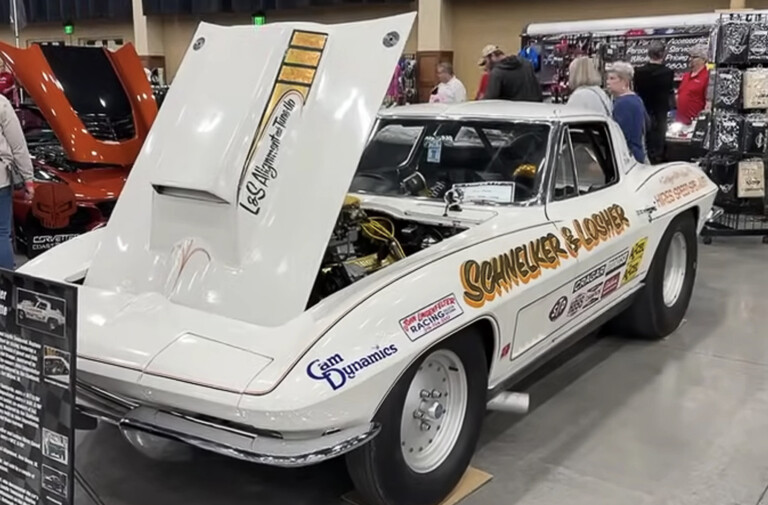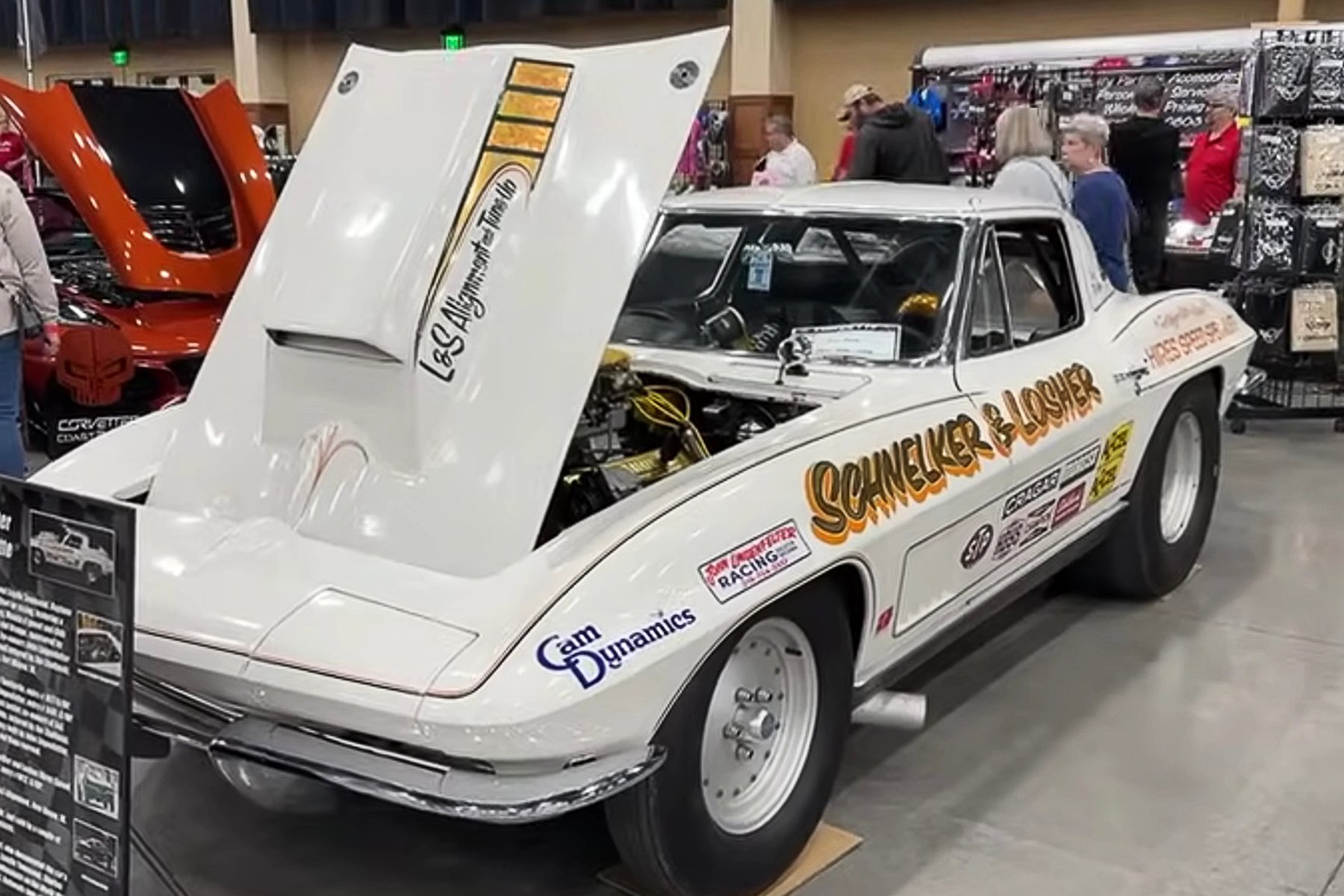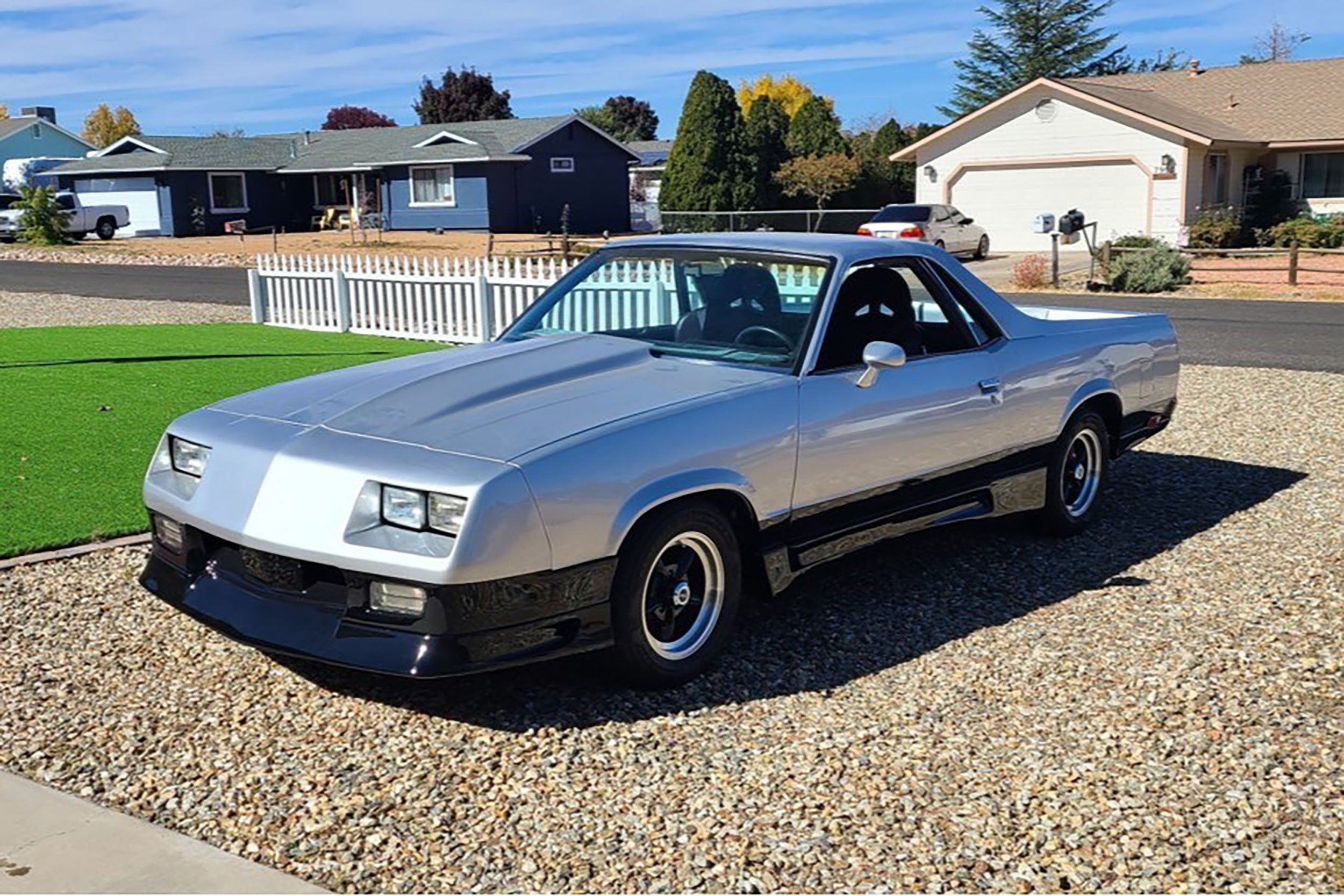
You’ve heard crew chiefs say it on television. You’ve heard grass roots tuners repeat it. Data is king.
The seat-of-your-pants approach that racers once relied on has been completely replaced by bits and bytes of data, and acquiring, storing, and studying that data has become the number one tool in the bag of any crew chief or tuner. It’s for this reason why racers have been turning to Racepak data acquisition systems in rising numbers. Those early Racepak units certainly weren’t as technologically involved as those that racers utilize today, but it surely signaled that racing was headed down a digital road.
With the modern data logging tools that Racepak systems offer at our disposal, there’s very little information that we can’t log and review from a run down the dragstrip. In effect, if it can’t log it, you probably don’t need it. From the essentials such as Engine and Driveshaft RPM, to EFI Throttle Position, EFI Intake Temperature, and Blower Inlet Temperature, everything you need to see what’s going on in the intricate system that is your race car can be viewed down to the millisecond right there at the track, allowing for the most minute of adjustments to your tune-up.
In our Project BlownZ Camaro, we're utilizing Racepak's innovative IQ3 digital dash, that allows all the creative freedom you could imagine to program informational displays to the driver. All of that information is delivered from sensors on the car, just like this Driveshaft RPM sensor located on the driveshaft yoke.
“You can look at it as ‘data is data’, but there’s more to it than that for Racepak,” explains Racepak’s Tim Anderson. “We’ve been in the drag racing industry for a long time, and that’s allowed us to refine our product and provide products that the racer needs. But beyond that, our modular design allows the racer to purchase a base data acquisition system and add instrumentation, sensors, gauges, and digital dashes through the use of a single cable coming out of the data logger.”
We’ve been in the drag racing industry for a long time, and that’s allowed us to refine our product and provide products that the racer needs. – Tim Anderson
On our Project BlownZ 275 Drag Radial Camaro, we’ve wired up one of Racepak’s truly revolutionary IQ3 Digital Dash units and is coupled with with their V300SD data logger to deliver all the information we could ever imagine using and…then some. In this tech review, we’re going to take a closer look at how this priceless data is logged and how we can interpret it pass-by-pass to optimize our combination.
Logging
Logging the data is a rather straightforward process that’s as much about the hardware as it is the software. Utilizing sensors that we’ve installed in key elements of the car (the intake manifold, on the driveshaft, in the headers, etc.) and Racepak’s V-Net cables, everything is routed to the V300SD unit that we have mounted next to the driver. A button located on the dash (this button can be mounted anywhere, and is often outside the car for the crew to trigger) begins recording the data. From that point to a pre-determined recording cutoff, every piece of data will be recorded and stored for later review.
The data is stored on a a standard SD card like that used in digital cameras in the V300SD, which one can either connect their laptop to and read directly from the data logger unit, or remove the SD card and insert into a laptop or card reader to review.

All of the sensors we have wired in the race car are connected to this modular V300SD data acquisition unit that features just a single port on the back. As an interesting side note, this logger actually features a built-in G-Meter, which is an exceptional tool for racer's to learn more about their runs and their race car.
Reviewing Your Run Data
The entire premise of recording and storing this data is so that a crew chief can review it, interpret it, study it, and react to it. So how do we do that? Well, we’re going to use a sampling of data and data elements to illustrate how we can use the numbers and graphs delivered by the Racepak unit to make reactive changes to our engine and driveline combination.
Racepak ships their data acquisition units with their DataLink software (which is also available as a free download on their website), and is the software we’ll be using to monitor the various functions of our Camaro.

Shown here is an example of a run with our BlownZ Camaro using the Racepak DataLink software. Shown in the graph are values for Engine RPM, Oil PSI, EFI Air/Fuel Ratio, and EFI TPS. The software allows us to evaluate each of the sensors at once, as shown, or by clicking the sensor tabs at the top, we can break the data down to a specific sensor to evaluate each one on a more detailed basis. On this particular run, you can virtually relive the run, from the time the driver first steps on the throttle against the transbrake, to where he pedaled the car, based on the Engine RPM and the Throttle Position Sensor readings.
Setting The Zero Point
When we download a run to the DataLink software, the first thing we need to do is to establish a “zero point” that determines the start of the run. Our driver trips the recording button on the dash following the burnout, and from there, a pre-set 300 seconds of data is recorded thereafter. We certainly don’t need all of that extra information, so the zero point marks the actual starting point of the run.
This can of course be determined by the driver or tuner depending on their driving style and their engine/driveline combination. Some might wish to start this when they go on the transbrake, others when the car launches. Because we want to know things like boost and manifold pressure on our supercharged car from the staging process on, beginning our zero point at the launch would skip valuable data.
From here, we can starting poring over the data.
Engine RPM

In this graph, you can see the graphs for Engine RPM and Driveshaft RPM. You can clearly see that the driver pedaled just over two seconds into the run, however, the driveshaft speed remains the same through forward inertia. Once the driver stepped back on the loud pedal, the flat driveshaft speed continues to climb through the end of the run.
More often than not, the first thing a racer wants to see is the RPM graph of their run in order that they can relive the pass in detail, and as any seasoned racer or tuner will tell you, the RPM reading is one of the most valuable tuning and driving tools one can have, and it just so happens to be an element that even novice racers can plot out and understand.
One can learn a lot about their race car simply by reviewing and studying the RPM graph. You can see the RPM’s at idle, the RPM at which the car was launched and where it was shifted. You can see if there were spikes in the RPM indicating tire spin, whether the driver short-shifted or over-revved, or if the engine lacked power and was pulled down below its optimum power range.
This is certainly valuable information for an engine builder, as he can compare this information alongside the data gathered when running your engine on his dyno to determine if the engine is operating within its power band. From this, you or the engine builder can advise on gearing, cam profiles, and other elements of the horsepower equation.
Driveshaft RPM
The Engine RPM graph can be a great tool for studying where the tires are hooking or spinning based on the engine RPM. Utilizing a sensor mounted on the rear end housing that measures the rotation of the driveshaft yoke can focus in on this critical action of the race car in more precise detail.
Like the engine RPM, Driveshaft RPM is plotted on a time line. At the beginning of the run when the car is static in the staging beams, the line on the graph will be horizontal. After the launch, on a perfect run, the graph would progressively become more vertical until the driver decelerates at the finish line. We all know that perfect runs are nonexistent, however, and it’s on those typical passes where one can see tire slip as indicated by a vertical slope on the graph or by sudden changes upward during the run.

Shown here is another example of how Driveshaft RPM appears on a run. As it should, the pink line indicating driveshaft speed continues a consistent vertical ascent during the run, taking only a slight horizontal movement at the shift point. You can also see how inertia works at the end of the run, as the engine RPM, G-Meter, and EFI TPS drop off instantly while the wheel speed takes a gradual drop.
Naturally, the best way to study a particular run and develop an optimum and consistent graph curve to tune for is to compare the current run alongside your best run to date or best pass on a particular track. If you overlay the current data alongside that previous data, you’ll be able to visually determine if the wheels are accelerating faster or slower, and where the wheel speed is higher or lower at any point on the track. If there are bumps on the racing surface, the driveshaft RPM graph will show indications of such, allowing you tune the engine and/or the chassis and suspension to better navigate it.
Another thing you can determine using driveshaft RPM data coupled with engine RPM data is wheel spin on the gear changes. Whether you’re using a transmission or a direct drive and clutch combination, comparing these two lines of information of the same run will provide an indication if the tires are slipping or biting when the power is applied and the RPM’s increase at the shift.
Remember when you study and tune for wheel speed that tire spin isn’t necessarily a bad thing. Often, when a car is shifted, the next gear can pull the engine below its optimal RPM range. Spinning the tires removes some of the load on the motor and allows it to return to its power-making RPM quicker.
Accelerometer

Overlayed in this graph is the G-Meter and Driveshaft RPM. These two pieces of data can provide a lot of knowledge on wheel spin and any unevenness on the surface of the race track.
While a relatively simple piece of information on the surface, the Accelerometer, or Acceleration G-Meter, is a highly useful yet under-appreciated tool in a tuner’s arsenal.
The accelerometer records the G-forces of acceleration going down the track, allowing one to evaluate that rate over the race distance. Obviously, a run with a higher average acceleration rate over the course of the pass is going to be the quickest, but the G-meter offers more use than just that.
Driveshaft RPM data, as we just discussed, can suffer from bumps in the racing surface. When the car hits the bump, the rear tires are compressed, which sends a momentary increase in wheel speed to the Racepak data recorder. In essence, it will look like the car lost traction on the graph. But if we lay the G-meter reading alongside the Driveshaft RPM, we can evaluate whether the car spun the tires and the rate of acceleration flattened out for a moment in time, or if we simply ran over a bump in the surface and maintained that rate.
The Accelerometer and Driveshaft RPM are probably two of the most important tools that drag racers use. – Tim Anderson
The whole premise of drag racing is acceleration, so you can understand why the G-Meter reading is a valuable asset to verify the effects of any changes to the race car, whether its a tuning or drivetrain adjustment.
An Accelerometer is a built-in feature of the V300SD unit that we’re using in BlownZ, omitting one extra instrument we’d need to wire into the race car. “The Accelerometer and Driveshaft RPM are probably two of the most important tools that drag racers use, so we chose to eliminate it as an add-on,” explained Anderson. “You know, racers could use 10 other sensors to accomplish what they could using one, and something as simple as a G-meter that does it instantly.”
Air/Fuel Ratio
The air/fuel ratio of an engine is one of the single most critical pieces of information used to tune an engine. If it’s too lean, the engine will detonate, while if it’s too rich, the engine will fail to produce optimum or expected horsepower.

Overlaying the Engine RPM and our EFI Air/Fuel sensor, you can see on this run (the same run shown in earlier graphs) that, as the driver pedals the car, the air/fuel mapping readouts as the engine RPM falls off momentarily, then re-adjusts as the driver steps back on the throttle.
Air/fuel ratio is, of course, the mass ratio of air to fuel that’s present in the engine, as typically measured via temperature bungs located in the header tubes just aft of the exhaust valve. A forced induction engine like ours will generally favor the 11.2:1 to 11.3:1 range, while naturally aspirated engines hover around 13:1. Using the information gathered by the Racepak unit, we can review the air/fuel ration throughout the course of the run and adjust our jetting (on a carburetor) or make fuel map changes in an EFI system to achieve the desired air/fuel ratio.
With the capability to wire sensors into virtually every element of a race car minus the questionable brain functions of the driver, there’s an endless discussion that we could go into regarding each and every one of these pieces of information and how we can convert that information into tuning changes, but the internet would run out of ink, so to speak. What we’ve discussed here is only a small snapshot of what data recordings provided by acquisition systems can supply and how we can make valuable use of that data. With technology like this at our disposal, there’s absolutely nothing that we can’t know about our race cars, and the end result of that is better tuning decisions and, hopefully, better drivers.




















